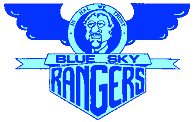ACTIVISION
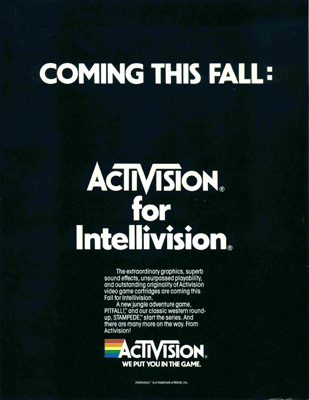
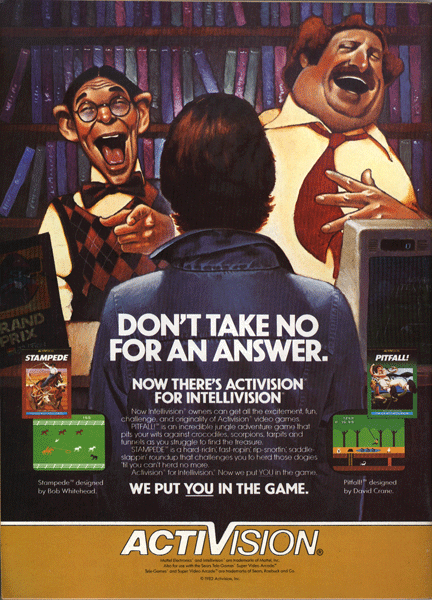
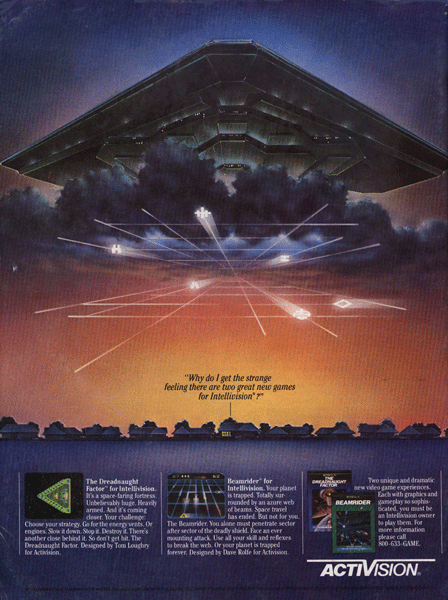
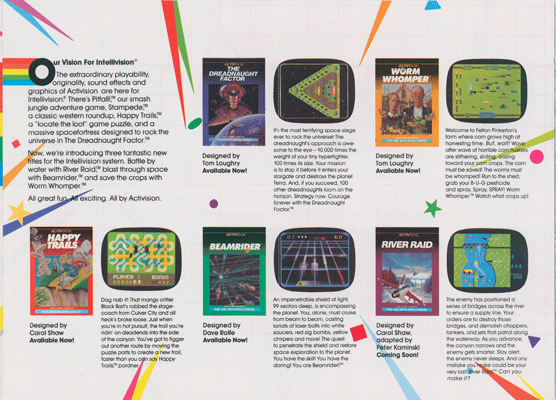
In 1979, Activision was founded to produce titles for the Atari 2600, becoming the first of the video game third-party publishers. It was also the first to aggressively raid its competitors for programmers. After Mattel Electronics introduced Intellivision in 1980, Activision sought out experienced programmers from APh Technology Consulting and Mattel to work on Intellivision games.
Peter Kaminski was recruited from APh; at Activision he programmed Intellivision River Raid. John Sohl and Steve Montero joined Activision after designing games at Mattel. (Ironically, neither completed an Intellivision title before Activision pulled the plug on Intellivision development in 1983.)
But Activision's biggest recruitment coup came when the senior programmers at APh left to form their own company, Cheshire Engineering. Activision was the highest bidder in securing Cheshire's services to create original Intellivision games (Activision's in-house Intellivision titles were conversions of Atari 2600 games).
Cheshire designed six original games for Intellivision: Beamrider, The Dreadnaught Factor, Worm Whomper, Cloud Nine, RocketBall and Towerquest. The first three of these were released; the second three were switched late 1983 from Intellivision to Colecovision before being abandoned in 1984 cutbacks.
To avoid a lawsuit for stealing corporate secrets, Activision was careful to demonstrate that it already had the knowledge to program for Intellivision (through reverse-engineering) before hiring anyone from APh or Mattel. The former APh and Mattel programmers were told that they were being hired only for their experience, not their knowledge. In other words, they couldn't use any features of the operating system (the Exec) that Activision didn't specifically know and tell them about.
This was particularly ironic for David Rolfe of Cheshire. At APh, Dave wrote the Exec; now he had to feign ignorance of what it did. He poked fun at this in his code for Beamrider. In copying Activision's instructions for setting up the initial game parameters, he commented the code with notes such as "The following instructions do magic things" and "I wonder what THIS does" and simply "?????".
Without the overhead of hardware production and game licenses like Atari, Mattel Electronics and Coleco were committed to, Activision was in a better position to weather the industry crash of late 1983. In fact, after Mattel Electronics closed, several of the Blue Sky Rangers were hired by Activision. Activision also acquired rival third-party publisher Imagic.
Even Activision had to scale back dramatically as the industry continued to drop in 1984. All console titles were cancelled in favor of computer games exclusively. Activision managed to survive the lean years of the late 1980s. And with the resurgence of video games and growth of computer games in the 1990s, Activision reemerged as a major publisher.
In 1998, Activision came full circle, releasing Activision Classics - a PlayStation collection of its original Atari 2600 games.
In 1999, Activision made a deal with Intellivision Productions, Inc. to release the Mattel Electronics/INTV library of games on its Intellivision Classics collection for PlayStation. In the same agreement, Intellivision Productions acquired the Activision and Imagic libraries to release on its October 2000 Intellivision Rocks! collection for Windows and Mac.
- Beamrider
- Cloud Nine (unfinished)
- The Dreadnaught Factor
- Happy Trails
- League of Light (unreleased)
- Pitfall
- River Raid
- Robot Rubble (unreleased)
- RocketBall (unfinished)
- Stampede
- Termite (unfinished)
- Tower Quest (unfinished)
- Worm Whomper

